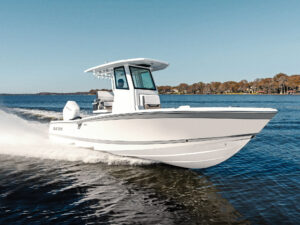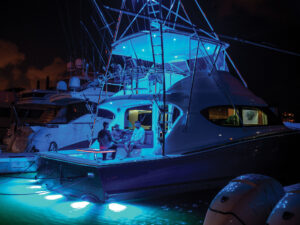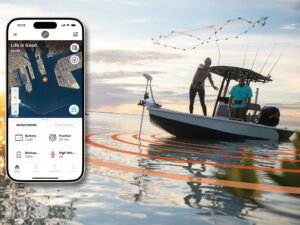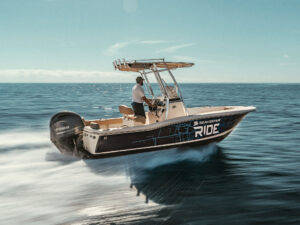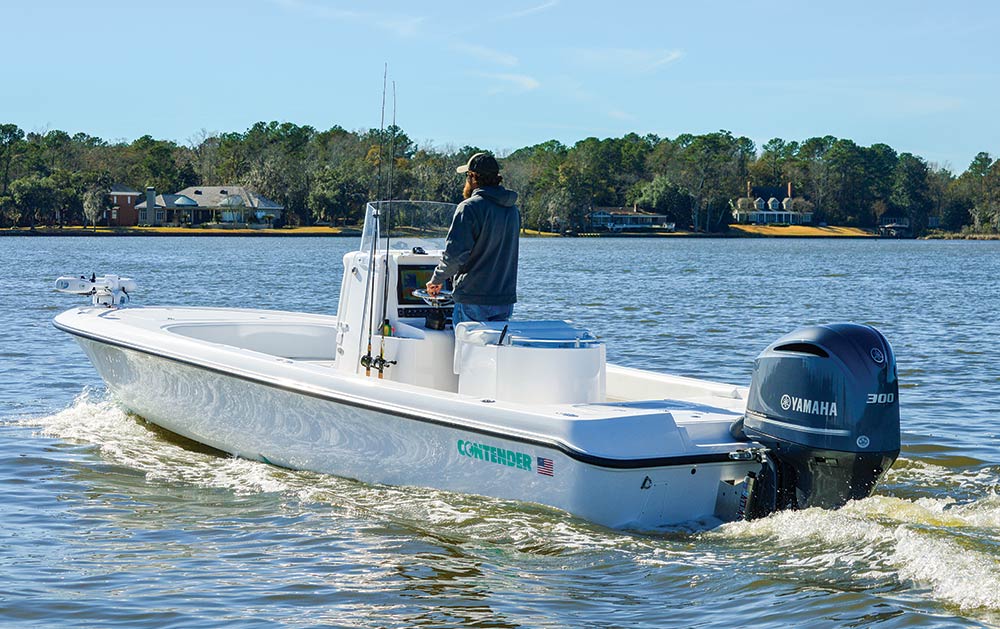
Does the perfect coastal fishing boat really exist? Judging by meteoric sales figures of bay models, and the fact that more and more builders are joining the fray, the answer is a resounding yes.
What makes a bay boat such a versatile choice for anglers is a combination of things: lots of fishing room, a wealth of fishing features, and the thoughtful design and rigging that afford anglers the flexibility to go from the shallow grass flats to blue water, when the seas allow.
“You’re not going to pole a bay boat, but it does function well in shallow water with a trolling motor. And, in the right conditions, you can go from 12 inches of water to 1,200 feet because you have the right tool to do both,” says Charlie Johnson of Maverick Boat Group — builder of Pathfinder’s 22- to 26-foot bay boats — in Fort Pierce, Florida.
All bay boats are basically center consoles, which makes casting and following a hooked fish around the boat a cinch, and they come in two basic layouts: one includes an open bow and cockpit, the other has an expansive forward casting deck and usually a smaller deck in the rear. Pathfinder offers both, and models with the forward cockpit incorporate raised U-shaped seating with dry storage underneath, plus an insert that fills the gap between the seats, converting the space into a casting deck.
When it comes to hull designs, many bay boats integrate a transom pocket or tunnel, which facilitates takeoffs and navigation in shallow water with the motor raised, and the larger models have enough cockpit freeboard to venture offshore. Stepped hulls are a more recent trend. The steps help reduce friction from the water by adding more ventilation under the hull, resulting in better fuel efficiency and improved performance.
Aside from ample storage, in-deck or under the seats, the most desirable features for anglers include leaning-post-style helm seating with tackle storage and a rocket launcher on the backrest to keep rigged rods at arm’s length; at least one large, insulated fish box (preferably long enough for a couple of big pelagics); horizontal rod storage under the covering boards; and one or more sizable livewells with water exchange and recirculation to keep a large supply of bait frisky.
Pathfinder boats, says Johnson, come with all that as standard equipment, as well as a hydraulic jack plate, which allows the engine to be raised vertically to reduce draft and fine-tune the ride for optimum performance, either a T-top or hardtop to provide protection from the elements, and more.
Capt. Richard Rutland is an avid tournament competitor who also guides up to three charter clients aboard his Contender 25 Bay throughout Alabama’s Mobile Bay system. Although most of his charter trips are within 20 miles from shore, Rutland has been as far as 57 miles out from Dauphin Island. “I’m really impressed with the stepped hull on my Contender,” Rutland says. “It has a soft, cushioned ride, I’m getting up to 4.2 miles per gallon with the 300 hp Yamaha, and my top-end is 60 miles per hour. I also have an incredible range with the 96-gallon fuel tank.”
Rutland also says the large forward casting deck easily accommodates three anglers. The U-shaped transitional step on the bow centerline houses an insulated compartment. That lowered space is a reassuring spot for those with balance issues, and the 180-quart fish box will keep three cobia or a four-man limit of red snapper on ice.
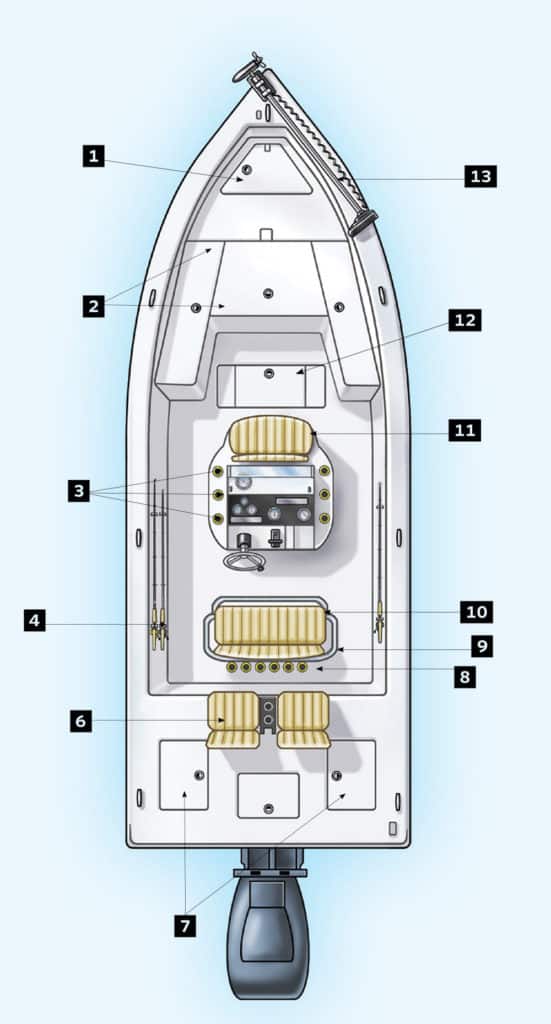
[2] Dry Storage
[3] Console Vertical Rod Racks
[4] Under-Gunwale Horizontal Rod Racks
[6] Foldaway Bench or Jump Seats
[7] Livewells
[8] Backrest Rocket Launcher
[9] Tackle Storage and Cooler
[10] Leaning-Post-Style Helm Seat
[11] Console Seat with Cooler or Livewell Underneath
[12] In-Floor Fish Box
[13] Trolling Motor Steve Sanford
According to Rutland, his boat has vertical racks for up to 10 rods straddling the console, and undergunwale racks where he keeps fly rods, plus a gaff and deck brush. The leaning post includes a 30-gallon livewell and holds two more rods, typically rigged with pitch baits for cobia. In addition, a raw-water washdown system in the stern comes with a quick disconnect to keep the decks clean.
“The boat comes with one big well and a smaller one for crustaceans on the rear casting deck,” Rutland explains. “But I had both combined into a single 52-gallon well, so I can keep two redfish and five trout alive during tournaments.” The wells are rigged with recirculating capability, which helps keep bait alive when he moves from salt to brackish water, or vice versa.
Capt. Charles Ballard is another guide who chose a bay boat for his charter business. He chases cobia along the beaches, fishes wrecks in hundreds of feet, and even runs out to the Gulf Stream, and he went with a Yellowfin 26 Hybrid rigged with a tower and a second helm station to spot fish and keep an eye on trolled baits. “It cuts through the waves and rides like a custom sport-fisher,” he says. “It has enough room for three anglers and a mate, and tall-enough gunwales so clients can lock their knees in when fighting fish.”
Ballard doesn’t go real skinny often. “Most of my inshore trips are in Pamlico Sound for bull reds,” he says. A 36-volt Minn Kota Ulterra trolling motor on the bow let’s him fish the shallows or hold over wrecks using the Spot-Lock anchor-mode feature.
Ballard claims he has enough rod storage to stock a virtual tackle store; a forward, oversize fish box that easily stores the day’s catch; and no shortage of bait capacity. “I have a 55-gallon livewell in the leaning post where I usually keep menhaden, and a 40-gallon one in the deck to hold bluefish overnight when I’m fishing king mackerel tournaments.”
So, is it really possible for one boat to handle all your coastal fishing needs? Perhaps. With the evolution of bay and hybrid models, many sure come pretty darn close.

